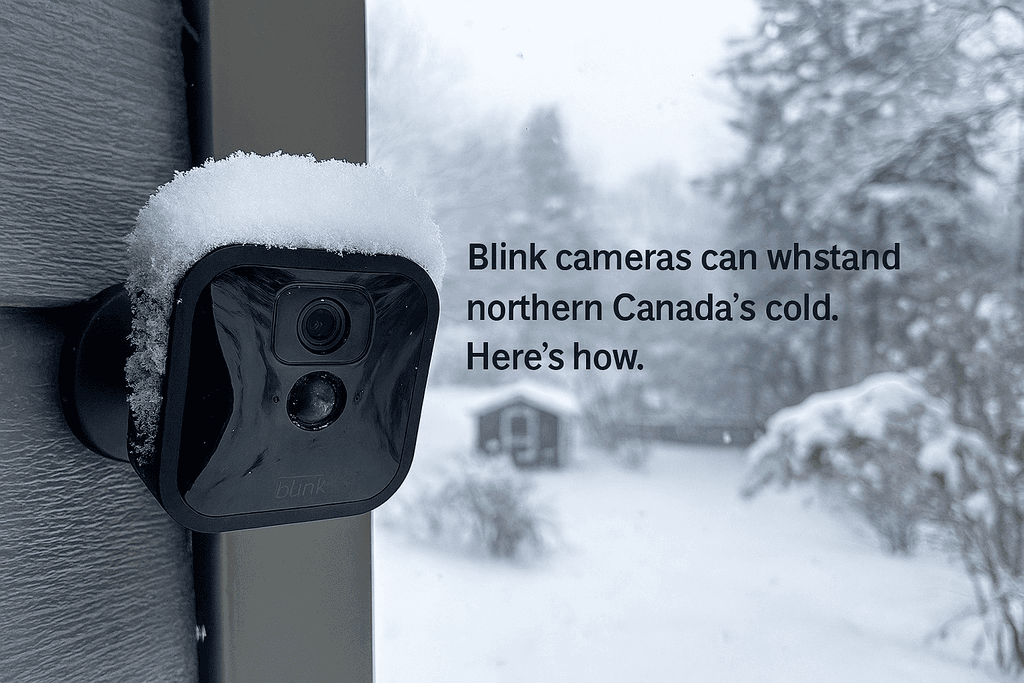Blink Cameras for Cold Canadian Climates | AmenSecurity.ca
Blink Cameras in Northern Canada: Cold-Weather Performance & Setup Tips
Explore Blink camera performance in northern Canada. Get expert tips on battery life, Wi-Fi setup, and cold-weather reliability. Compare top models for winter security.
Discover how Blink cameras perform in northern Canadian winters. Learn cold-weather setup tips, battery advice, and alternatives for extreme conditions.
By Leo
Category: Blink Camera
Published: 2025-10-29
5 min read
Blink Cameras for Northern Communities: Cold-Weather Performance Explained
Introduction: Smart Security in Harsh Climates
Northern Canadian communities face unique challenges when it comes to home security. With winter temperatures regularly plunging below -20°C and snowstorms blanketing entire regions, choosing the right surveillance system is critical. Blink cameras, known for their affordability and wireless convenience, are increasingly popular—but how well do they perform in extreme cold?This blog explores Blink’s cold-weather capabilities, limitations, and best practices for reliable performance in northern environments.
Understanding Blink Cameras: Features and Flexibility
Blink offers a range of compact, battery-powered cameras designed for indoor and outdoor use. Key features include:- Wireless installation via Wi-Fi
- Motion detection alerts
- Cloud and local storage options
- Two-way audio and HD video
- Battery-powered operation (AA lithium batteries)
These features make Blink ideal for remote setups, but cold weather introduces new variables.
Temperature Ratings: What Blink Cameras Can Handle
According to Blink’s specifications, most models—including Blink Outdoor and Blink XT2—are rated to operate between:- -4°F (-20°C) to 113°F (45°C)
This range covers many Canadian winters, but not all. In regions like Yukon, Nunavut, or Northern Quebec, temperatures can dip below -30°C, pushing Blink cameras beyond their safe operating threshold.
Cold-Weather Risks: What Can Go Wrong?
Extreme cold affects electronics in several ways:- Battery Drain: Lithium batteries lose efficiency in sub-zero temperatures, shortening camera uptime.
- Connectivity Issues: Wi-Fi signals may weaken through ice-covered walls or long distances.
- Lens Fogging or Freezing: Moisture buildup can obscure footage or damage internal components.
- Delayed Motion Detection: Sensors may respond slower in freezing conditions.
Real-World Performance: What Users Say
Many Canadian users report that Blink cameras continue to function in moderately cold weather, especially when sheltered from wind and moisture. However, performance may degrade below -20°C, with shorter battery life and occasional connectivity drops.
Tips to Improve Cold-Weather Reliability
To maximize Blink’s performance in northern climates:- Use lithium AA batteries (never alkaline) for better cold resistance.
- Install cameras under eaves or inside weatherproof enclosures to shield from snow and wind.
- Position cameras close to Wi-Fi routers or use Blink’s Sync Module 2 for stronger signal.
- Regularly check battery levels and replace before deep freezes.
- Avoid direct exposure to sunlight and snow glare, which can affect motion detection.
Alternatives for Extreme Cold
If your community regularly experiences temperatures below -30°C, consider cameras designed for harsher conditions. Brands like Reolink and Arlo offer models with wider temperature ranges and built-in heating elements.
Held Up Surprisingly Well Through a Yukon Winter” – Walter
Quote text hereI installed a Blink Outdoor camera outside my cabin near Dawson City last November, mostly to keep an eye on wildlife and deliveries. Honestly, I didn’t expect much once the deep freeze hit. We had several nights below -30°C, and I figured the batteries would give out or the footage would glitch.
To my surprise, the camera kept working—though I did have to swap batteries more often than usual. Motion detection was a bit sluggish during the coldest spells, and Wi-Fi dropped once during a storm, but overall, it did the job. I mounted it under the porch roof, which probably helped shield it from snow and wind.
Not perfect, but for the price and ease of setup, I’d say it’s a solid option if you’re not too far north or can give it a bit of shelter.
Conclusion: Blink Is Viable—With Smart Setup
Blink cameras can be a cost-effective solution for northern communities, provided they’re installed thoughtfully and monitored regularly. For most Canadian winters, they’ll perform reliably—but in the coldest regions, additional protection or alternative models may be necessary.At AmenSecurity.ca, we’re committed to helping Canadians secure their homes with smart, climate-conscious solutions. Contact us for personalized recommendations or browse our selection of winter-ready security systems.
Frequently Asked Questions
Can Blink cameras operate in temperatures below -20°C?
Blink cameras are rated down to -20°C, but performance may degrade below that. Battery life and motion detection can be affected.
What type of batteries work best in cold climates?
Use AA lithium batteries. They perform better than alkaline in freezing temperatures and last longer.
Will snow or ice damage the camera lens?
Direct exposure can cause fogging or freezing. Mounting under cover or using a weatherproof housing helps protect the lens.
Product Comparison
| Feature | Product 1 | Product 2 | Product 3 |
|---|---|---|---|
| Feature | Blink Outdoor | Reolink Argus 3 Pro | Arlo Essential XL |
| Operating Temp Range | -20°C to 45°C | -10°C to 55°C | -20°C to 45°C |
| Power Source | AA Lithium Batteries | Rechargeable Battery | Rechargeable Battery |
| Weatherproof Rating | IP65 | IP65 | IP65 |
| Wi-Fi Range Support | Moderate (with Sync Module) | Strong (dual-band Wi-Fi) | Strong |
| Cold-Weather Optimization | Basic | Moderate | Moderate |
| Price Range (CAD) | $120–$150 | $160–$200 | $180–$220 |
